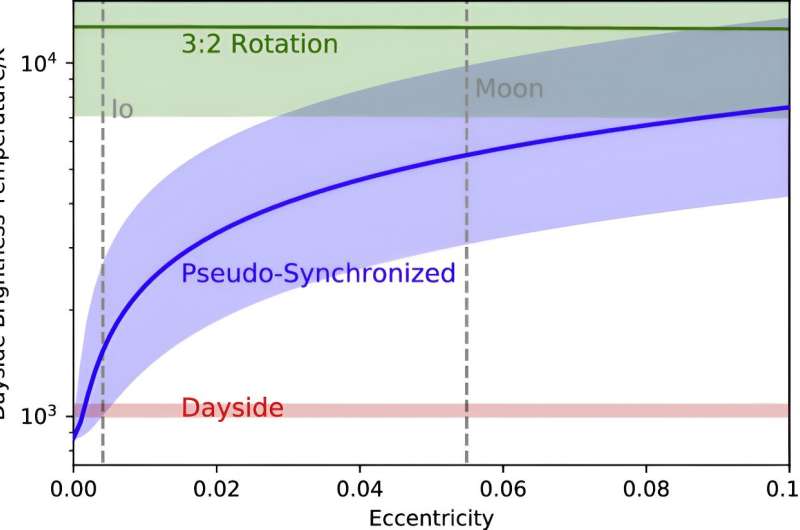April 3, 2024 report
This article has been reviewed according to Science X's editorial process and policies. Editors have highlighted the following attributes while ensuring the content's credibility:
fact-checked
peer-reviewed publication
trusted source
proofread
First tidally locked super-Earth exoplanet confirmed

An international team of astronomers and astrophysicists has confirmed the first known observance of a tidally locked super-Earth exoplanet. In their paper published in The Astrophysical Journal, the group describes the unique approach they took to confirm that the exoplanet LHS 3844b is tidally locked and what the finding suggests about other planets in the galaxy.
Prior research has led astronomers to believe that some exoplanets are tidally locked, with one side that always faces the star they revolve around, but they have been unable until now to prove it. In this new effort, the research team picked a likely candidate and used a unique approach to study its attributes to ascertain its motion.
Prior research has shown that several moons in our solar system, including the one circling Earth, are tidally locked, always facing the planet they orbit. In this situation, their rotation period matches their orbital period—the result is a moon that always shows the same side to its planet. For this reason, the Earth's moon has what has commonly been described as a "far side"—the side we never see. Tidal locking is due to gravitational forces between a moon and its planet—or a planet and its star.
To test whether the exoplanet LHS 3844b, which is a super-Earth, is tidally locked, the researchers studied infrared data from the Spitzer Space Telescope to measure the amount of starlight reflected by the planet. This allowed the team to calculate the temperature of the planet's surface. By doing so at different points in its orbit of its star, the team was able to determine that one side of the planet was much cooler than the other—a difference great enough to show that the cool side never faced the star.
The researchers suggest that finding one tidally locked planet strongly suggests that there are many more of them. Some in the field have suggested that many of the planets in the Milky Way galaxy are likely tidally locked. If that is the case, the researchers suggest, some may be able to harbor life along the boundary between hot and cold.
More information: Xintong Lyu et al, Super-Earth LHS3844b is Tidally Locked, The Astrophysical Journal (2024). DOI: 10.3847/1538-4357/ad2077
Journal information: Astrophysical Journal
© 2024 Science X Network




















